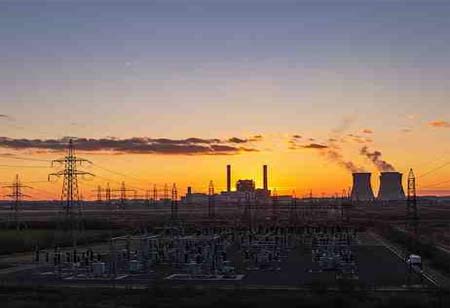Thank you for Subscribing to Electrical Business Review Weekly Brief
I agree We use cookies on this website to enhance your user experience. By clicking any link on this page you are giving your consent for us to set cookies. More info
Power in Motion: Understanding the Electric Transmission System
Electric transmission systems move high-voltage electricity from generation plants to consumers efficiently and reliably, using transformers, control centers, and smart grids to balance supply, reduce loss, and ensure consistent power delivery.

By
Electrical Business Review | Thursday, August 14, 2025
Stay ahead of the industry with exclusive feature stories on the top companies, expert insights and the latest news delivered straight to your inbox. Subscribe today.
Fremont, CA: Modern infrastructure cannot function without electric transmission lines, which allow electricity to be transported across great distances from power-producing facilities to consumers. Despite operating silently in the background, this network is essential to providing a steady and dependable power supply to households, companies, and industries. One must comprehend how it operates to appreciate this system's intricacy and the innovation propelling its development.
From Production to Transmission
The production of electricity starts at generating plants, which use a variety of energy sources, including nuclear, fossil fuels, and renewables like solar and wind. The electricity is unsuited for long-distance transmission because it is generated at a relatively low voltage. Step-up transformers rectify this, raising the voltage to extraordinarily high levels. Electricity can be transported across areas more efficiently thanks to high-voltage transmission, which reduces energy loss over distance. The transmission grid, a system of high-voltage power wires that spans states and nations, is where these converted currents enter.
The Grid's Flow Persistence
For electricity, the transmission grid works similarly to a roadway system. It is controlled and observed to maintain a steady energy flow by balancing supply and demand in real-time. Control centers use sophisticated software and monitoring instruments to keep the system functioning correctly. Usually supported by massive steel towers, high-voltage wires extend hundreds of kilometers. The grid is structured with several channels to ensure safety and efficiency. This allows power to be diverted in the event of equipment failure or heavy demand in specific locations. This adaptability lowers the chance of widespread outages and improves reliability.
Taking a Backseat to Distribution
To ensure that electricity is safe for usage in homes and businesses, the voltage must be lowered once again as it approaches its destination. Step-down transformers at substations reduce the voltage to levels that can be used in this operation. Electricity then enters the distribution system, a network with a lower voltage that supplies power to final consumers. The distribution system serves neighborhoods, office parks, and industrial areas, which consist of smaller power lines, transformers, and utility poles. Innovative technologies that provide better load management, quicker outage responses, and increased energy efficiency are being incorporated into modern grids more and more.








